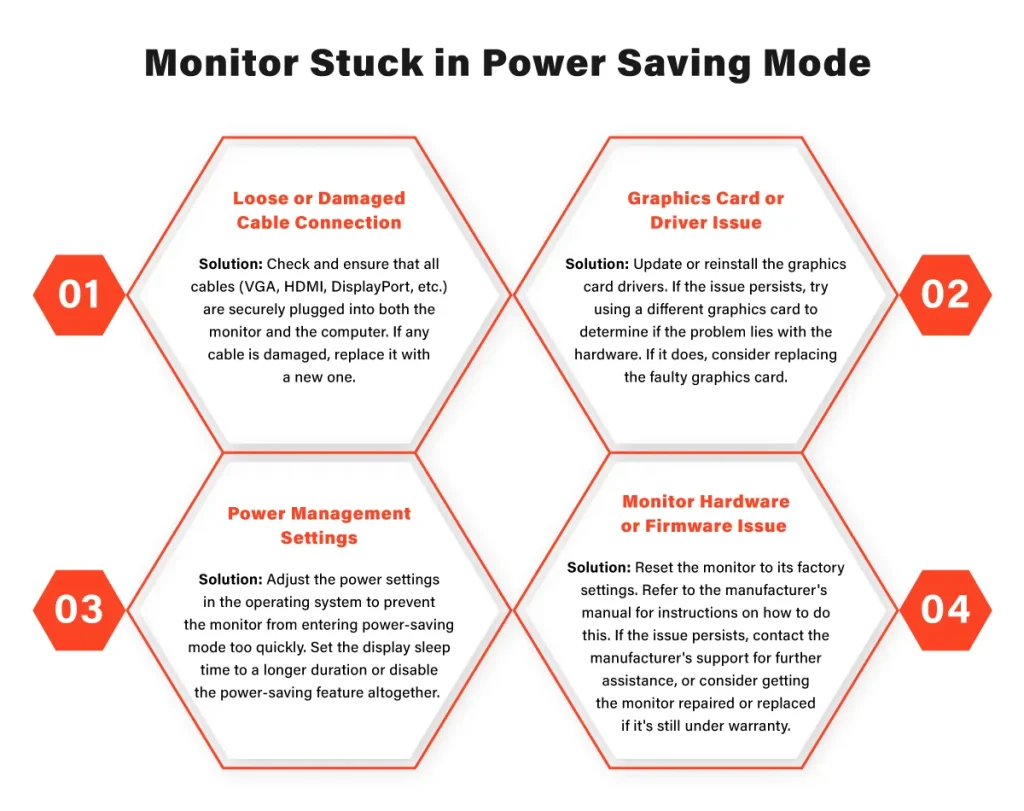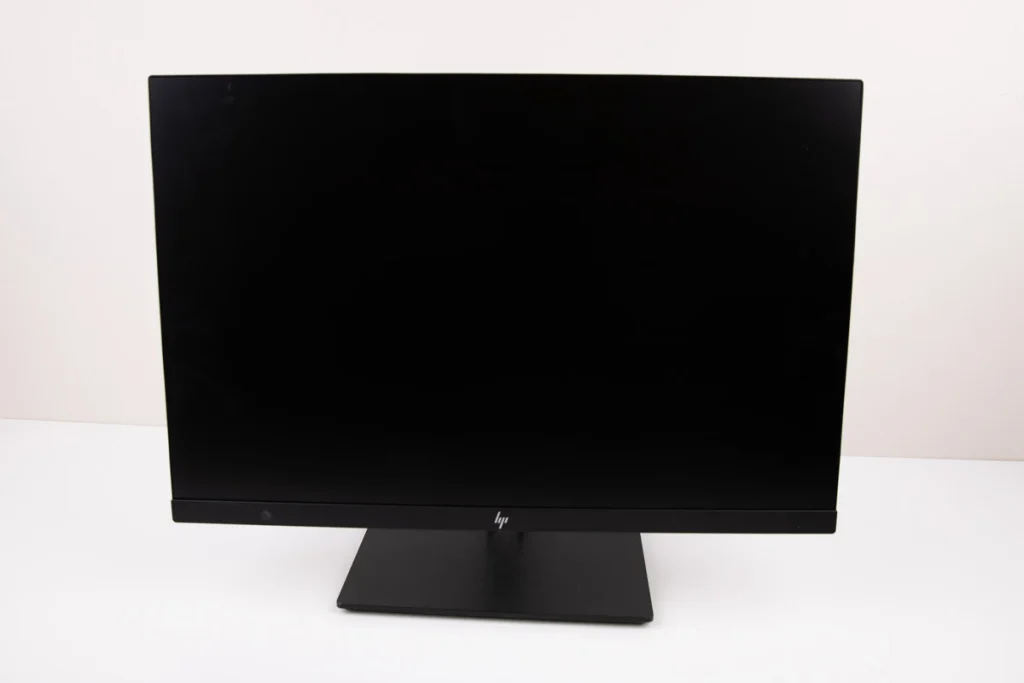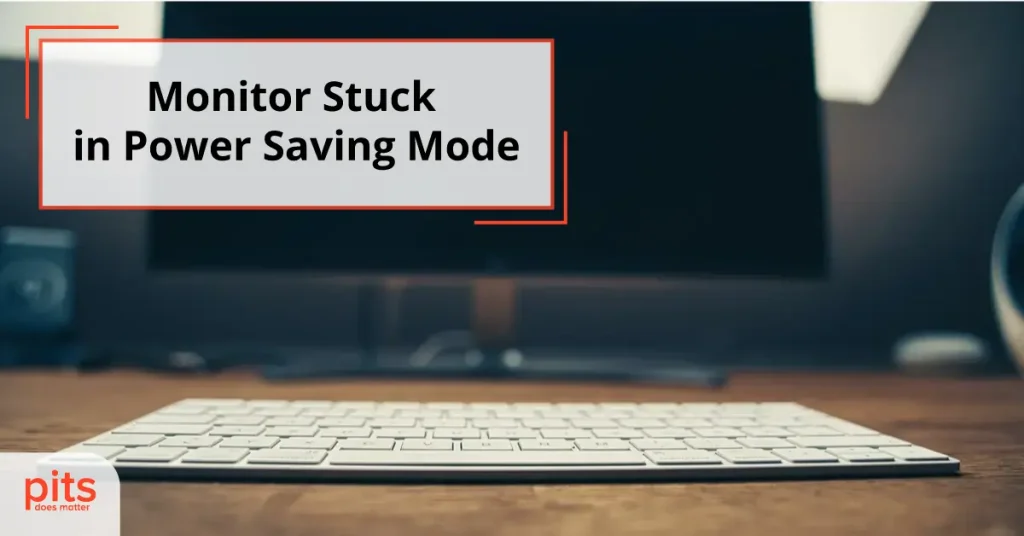A monitor stubbornly stuck in power saving mode can spell disaster, leading to significant downtime and aggravation. This blog will delve into the vexing issue of monitors caught in power saving mode, explore the likely causes, and offer guidance on resolving this irksome problem.
Understanding Power Saving Mode
Power saving mode is a built-in feature in monitors designed to reduce energy consumption during periods of inactivity. When the monitor senses no user interaction, it automatically transitions into a low-power state, typically denoted by a dim or powered-off screen. While power saving mode is a valuable feature for energy efficiency, it can sometimes cause issues when the monitor refuses to exit this mode and remains stuck.
Possible Causes of the Issue
Numerous factors can contribute to a monitor being ensnared in power saving mode. Here are some common culprits to consider:
- Connection Woes. Loose or faulty cables can disrupt the communication between the computer and the monitor, preventing a smooth exit from power saving mode.
- Incorrect Input Source. Monitors with multiple input sources may be configured to an inactive or unconnected source, leading to the power saving mode conundrum.
- Graphics Card or Driver Problems. Outdated or incompatible graphics card drivers can impede the communication between the computer and the monitor, causing the power saving mode issue.
- Faulty Hardware. In some cases, a malfunctioning monitor, graphics card, or power supply unit (PSU) can be the underlying issue, causing the monitor to become trapped in power saving mode.
Troubleshooting Steps
When your monitor stubbornly clings to “Power Saving Mode,” follow these troubleshooting steps to rectify the situation. Here’s a comprehensive guide to help you navigate the issue:
- Check Cable Connections: Ensure that the cables connecting the monitor to the computer (e.g., VGA, DVI, HDMI, DisplayPort) are securely plugged in at both ends. Consider testing with different cables or ports to rule out cable-related problems.
- Verify Input Source: Use the monitor’s on-screen display (OSD) menu or buttons to select the correct input source. Ensure you switch to the input corresponding to the cable connected to your computer.

- Power Cycle the Monitor: Turn off the monitor and unplug it from the power source. Wait for a few minutes, then plug it back in and turn it on. This action can help reset the monitor’s internal components and potentially resolve the power saving mode problem.
- Update Graphics Card Drivers: Visit the manufacturer’s website for your graphics card and download the latest drivers. Install the updated drivers and restart your computer to ensure the changes take effect.

- Test with Another Monitor or Computer: If possible, connect your monitor to another computer or attach a different monitor to your computer. This step can help determine whether the issue lies with the monitor or the computer.
If the problem persists with another monitor, it may suggest a computer-related issue, such as graphics card or driver problems.
- Reset Monitor Settings: Access the monitor’s OSD menu and look for a “Reset” or “Factory Reset” option. Choose this option to restore the monitor to its default settings. Bear in mind that this action may erase any custom settings you had configured previously.
- Check Hardware Components: If all else fails, consider examining your hardware components. Test your monitor with a different power supply or try connecting it to a different computer to rule out potential issues with the monitor itself.
Seeking Professional Assistance
If none of the troubleshooting steps yield positive results, it may become necessary to seek professional assistance. Get in touch with the monitor’s manufacturer or a qualified technician who can diagnose and repair the issue. They possess the expertise and tools necessary to identify any underlying hardware problems and provide an appropriate solution.
The frustration of a monitor stuck in power saving mode can be swiftly resolved by following the troubleshooting steps outlined in this blog. By examining cable connections, verifying input sources, updating graphics card drivers, and performing other suggested actions, you can regain control over your monitor’s functionality.
Remember, if all else fails, don’t hesitate to seek professional help. Rest assured that with patience and persistence, your monitor will soon be back to its normal working state, allowing you to resume your tasks or enjoy your favorite games without any interruptions.
Frequently Asked Questions
What does power saving mode in a monitor mean?
When your monitor is stuck in power-saving mode, it means that it is unable to exit the low-power state and resume normal operation. The screen may remain dim or turned off, even when the computer is active.
Why won't my monitor exit power saving mode?
There can be several reasons for a monitor failing to exit power saving mode, including loose cable connections, incorrect input source selection, outdated graphics card drivers, or hardware issues.
How to get a monitor out of power saving mode?
Start by checking the cable connections between the monitor and computer, ensuring they are secure. Verify that the correct input source is selected on the monitor. If the issue persists, try power cycling the monitor and updating your graphics card drivers. If all else fails, consider seeking professional assistance.
Can a faulty graphics card cause the power saving mode on the computer?
Yes, a faulty or incompatible graphics card can contribute to the monitor getting stuck in power saving mode. It’s recommended to update your graphics card drivers to the latest version or test the monitor with a different computer to rule out potential graphics card-related issues.
Will resetting my monitor's settings fix the power saving mode issue?
Resetting your monitor’s settings can sometimes resolve the power saving mode problem. Access the monitor’s on-screen display (OSD) menu and look for a “Reset” or “Factory Reset” option. Keep in mind that this action will restore the monitor to its default settings, so any customizations you made will be lost.
What if none of the troubleshooting steps work?
If you’ve tried all the suggested troubleshooting steps and your monitor is still stuck in power saving mode, it may be best to contact the manufacturer’s support or consult a professional technician. They can diagnose any underlying hardware issues and provide appropriate solutions.
